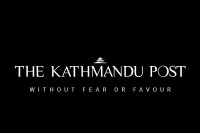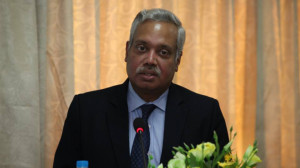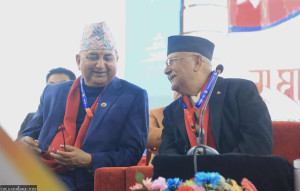National
Historic Annapurna I trail finds new footsteps
Local efforts have revived the trail to the world’s first climbed 8,000er, 75 years after Herzog’s ascent of the mountain.
Ghanshyam Khadka
A newly promoted trekking route leading to Annapurna I, the first mountain above 8,000 metres to be summited, has recently gained popularity among domestic tourists after local authorities developed it with basic infrastructure and clearer access.
Annapurna I is the ‘eldest’ of Nepal’s 8,000-metre peaks in mountaineering history. The trail reaching its base has become increasingly busy over the past few years, especially after the construction of a shorter, more accessible route.
Local tourism operators said around 6,000 domestic tourists visited the route this season, from mid-March to early June.
“There are now at least seven temporary lodging points along the trail, each accommodating 40 to 50 people with food and shelter, attracting more Nepali trekkers,” said Anil Magar, a hotelier in Gufaphant on the Maurice Herzog Trail. “Even mountaineers this year have opted to hike rather than fly by helicopter. Attractions like the Futfute waterfall and the Panchakunda glacial lake near base camp are gaining significant attention.”

This year marks the 75th anniversary of the first ascent of Annapurna I. On June 3, 1950, French mountaineer Maurice Herzog and his team became the first to reach its summit. Herzog’s book, Annapurna—one of the world’s best-selling mountaineering titles, translated into more than 40 languages—helped put Nepal’s mountain tourism on the global map.
Annapurna was summited before Mount Everest. While Everest now attracts hundreds of climbers each season and thousands at its base camp, Annapurna’s original route and legacy have largely been forgotten.
“It’s surprising that a mountain climbed 75 years ago and made famous by Herzog’s book remains so little visited,” said Maniraj Lamichhane, chief of the Nepal Tourism Board in Pokhara, who visited the base camp for the anniversary. “The original route taken by the first climbers is barely known. This deserves greater attention. Annapurna wasn’t just a mountain—it was Nepal’s gateway to the world. Yet, its trail has been neglected for 75 years, perhaps due to limited access and insufficient local involvement.”
Herzog and his teammates—Louis Lachenal, Gaston Rébuffat, and Lionel Terray—originally set out to climb Dhaulagiri (8,167 metres), visible from India’s Gorakhpur. However, they mistakenly followed the Kali Gandaki River instead of the Myagdi River, leading them to Lete in Mustang.
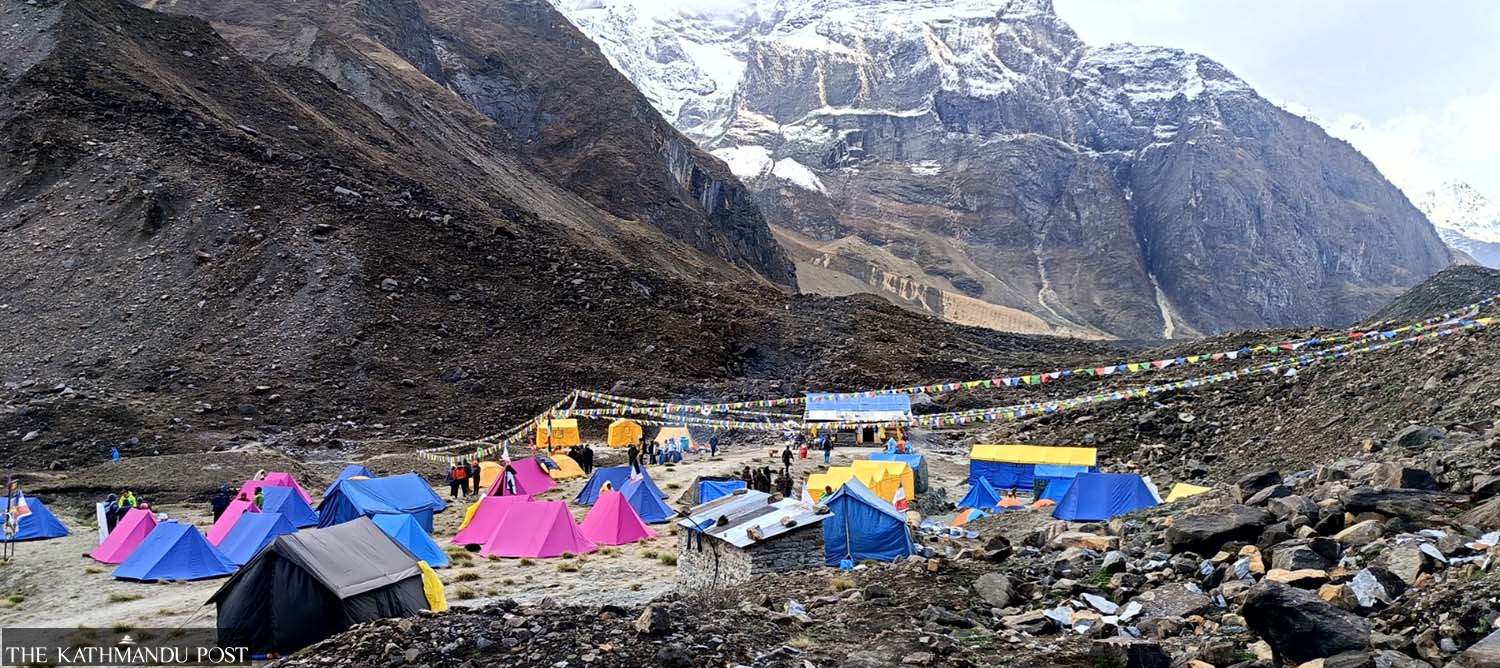
From there, they turned east, following shepherd and hunter trails along the southern slopes of Nilgiri South. Crossing alpine pastureland at 5,000 metres, they reached a ridge called Bhusket Mela beside the Mistri Khola. Within hours, they arrived at the base camp beneath Nilgiri North, Tilicho Peak, and Annapurna I.
On June 3, 1950, from base camp, Herzog and Lachenal reached the top of Annapurna I (8,091 metres) without supplemental oxygen. Since then, icefalls from Tilicho Peak have damaged the site of their first camp, and what was once a glacier has melted into a large lake.
The upper glacier is thinning, revealing exposed black rock. Large ice blocks are cracking and melting. Though striking, experts warn these rapid changes signal a troubling environmental shift.
“The landscape is changing rapidly. Thirty years ago, the glacier around the base camp was thick; now it’s almost gone,” said Indra Singh Sherchan, a search and rescue expert in the Himalayas. “During a recent avalanche rescue at Camp II, I witnessed layers of snow sliding dangerously.”
No alternative route has been established for Annapurna I. Some maps misleadingly label a “North Annapurna Base Camp,” despite no such peak existing. Geographically, the base camp is on the massif’s western side, although climbing routes approach from the north face.
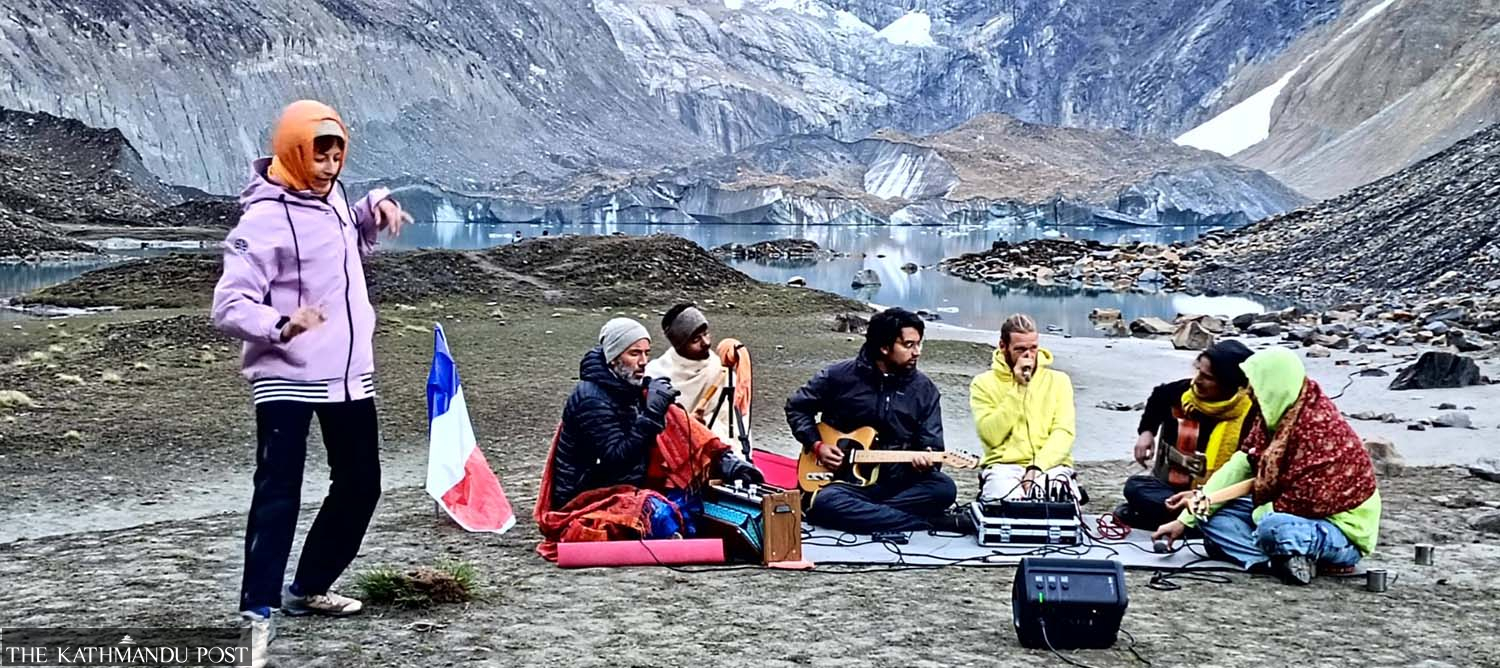
“Annapurna is considered a small but technically very challenging mountain,” said Purnima Shrestha, who is among the first Nepali women to summit the peak. “Today, backpacking and tea house trekking to base camp is quite accessible.”
A bronze plaque beside the statues of Herzog, Lachenal, and their Sherpa guides at base camp notes that, as of 2025, a total of 506 climbers have successfully summited Annapurna I. The fatality rate remains high, with over 32 percent of those attempting the climb losing their lives.
Herzog died in 2012 at age 93. His final visit to base camp was in 2010, when he descended via the Mistri Khola to Narchyang—a route that later inspired the Maurice Herzog Trail.
Following Herzog’s final visit, local schoolteacher Tej Bahadur Gurung of Prabha Secondary School led the first effort to chart a 16-day route along the Mistri Khola upstream to Annapurna Base Camp and its glacial lake. The path was mapped in 2011.
Gurung later left teaching to dedicate himself full-time to promoting the route. In 2020, Annapurna Rural Municipality officially named it the “Maurice Herzog Trail.” Gurung now runs a homestay in Narchyang and remains active in mountain tourism.
“Two decades ago, climbers reached base camp through Mustang. Few realised Annapurna lay within Myagdi’s geography,” said Gurung. “By following the river upstream, we uncovered the true access route.”
“Now, trekkers—both domestic and international—can reach base camp within a day or two via a tea house trek,” he said.




 11.12°C Kathmandu
11.12°C Kathmandu.jpg)



